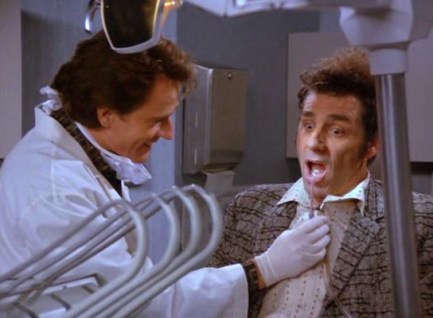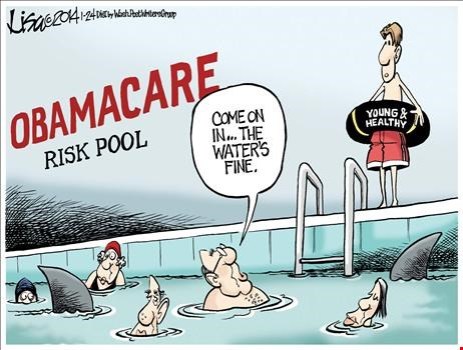Tags
Capitation, Centers for Medicare and Medicaid Services, Concierge Medicine, Group Market, Individual Mandate, Individual Market, Insurance Subsidies, John C. Goodman, Medicaid, Medicare Advantage, Mediprex Advantage, Obamacare, Pre-Existing Conditions, Premium Tax, Public Option, Tax Deductibility, Wage controls

Several Democrats vying for the party’s presidential nomination are pushing Medicare For All (MFA) as a propitious avenue for health care reform. They make the dubious claim that universal government health insurance would broaden real access to health care. As we know from experience with Medicaid, Medicare, and Obamacare, broader coverage does not necessarily imply better access. Even more dubious is the claim that MFA would reduce the costs of insurance and health care.
Single-Payer Perils
MFA appeals to the Democrats’ extreme leftist flank, a segment likely to have an out-sized influence in the early stages of the nomination process. Their fixation on MFA is borne of leftist romanticism more than analytics. Democrats have long-championed less ambitious plans, such as a public option, but those are stalling in “blue” states precisely due to their costs.
MFA would demand a massive transfer of resources to the public sector and would completely decimate the private health insurance industry, upon which 90% of Americans rely. As John C. Goodman explains, MFA would lead to less choice, misallocated health resources, long waiting times to obtain care for serious illnesses, and even greater inequalities in access to care because those who can afford private alternatives will find them.
Goodman also discusses a new health plan proposed by House Democrats that is more of an effort to save Obamacare. It won’t, he says, because among other issues, it fails to address the narrowing in-network choices faced by people with chronic conditions, and it would aggravate cost pressures for those who do not qualify for subsidies.
Outlining A Plan
There are many obstacles to a health care deal. Democrats are bitter after the effective repeal of the individual mandate, but despite their assertions, subsidized coverage of pre-existing conditions is not a principle about which most Republicans disagree. Really, the question is how to get it done. MFA is pretty much dead-on-arrival, despite all the bluster. But those who wish to protect choice and the efficient allocation of risk prefer to leverage a combination private insurance and targeted subsidies to achieve broad coverage.
Capitation: Goodman suggests an approach to high-risk patients that has proven successful in private Medicare Advantage (MA) coverage. These plans are structured around “capitated” payments to the insurer from the Centers for Medicare and Medicaid Services (CMS): per patient fees that cover in-network costs above the patient’s out-of-pocket limit. The insurer bears the risk of a shortfall. Assuming that the capitated payment makes coverage of high-risk patients a fair risk, insurers will compete for those buyers. That competition is what makes MA so appealing. Patients with pre-existing conditions under an MA-like system, which I’ll call “Mediprex Advantage”, or just Mediprex for short, would be pooled in “special needs” plans with relatively large capitations.
Risk-Shifting: The other major issue addressed by Goodman is the need to eliminate incentives for risk-shifting from the employer-paid, group insurance market to the individual market. The population of employed individuals in the group market is less costly, on average, and the sickest individuals often have to stop working. Goodman recommends state-level premium taxes on group policies, dedicating the proceeds to subsidies for individuals who must migrate from the group to the individual market. Employers could avoid the tax by offering full portability.
Tax Treatment: The bifurcation of health insurance coverage between employer and individual markets might not have lasted were it not for the favorable tax treatment afforded to employer plans. Deductibility of premiums on employer plans has inflated both premiums and health care costs, much to the detriment of those in the individual market. I would be happy to see deductibility repealed. An obvious alternative to.repeal, extending deductibility to the individual market, would balance incentives, but it would also tend to inflate costs somewhat. Still, the status quo is probably inferior to either repeal or deductibility for all.
Future Insurability: The concept of insuring future insurability is highly attractive. That is precisely what employer guaranteed-portability does, and the actuarial cost could be funded at employer/employee initiative, by a premium tax, or simply mandated. Voluntary action is preferred, but there are reasons why it is not a natural progression in the group market. First, renewability is usually guaranteed for the duration of employment, though job tenures have declined substantially since the early years of employer-based coverage. Nevertheless, health coverage is a retention tool that full portability would nullify. Second, employer coverage is itself a creature of government intervention, a result of the wage controls put into place during World War II. Since then, the features of health coverage have partly been driven by the tax-deductibility of premiums, which makes the cost of coverage cheaper after-tax. That, in turn, has encouraged the extension of coverage into areas of health maintenance and preventative care, but that increases the burden of paying for portability.
Plan Migration: If you’re not already covered under a group plan, another mechanism is needed to insure your future insurability. For example, Obamacare requires guaranteed issue and renewability in the individual market with a few exceptions related to non-payment, fraud, and product availability. Lower-income premium payers are eligible for subsidies. The suggestion here is that a guaranteed issue, renewable contract must remain available in the individual market with subsidized premiums for some individuals. This might also apply when an individual’s employment terminates. An individual who has fallen ill might be placed into a different risk class via the sort of “Mediprex Advantage” program outlined above, perhaps with subsidies to fully cover the premium and capitation.
Catastrophic Plans: Affordable catastrophic policies with guaranteed renewability should be available in both the individual and group markets. But what becomes of an individual seeking a change to broader coverage? They’ll pay a higher premium to cover the actuarial cost as well as the greater level of future insurability they choose to insure. But if they are not eligible for broader coverage, then it’s on to Mediprex.
Belated Signups: Finally, under guaranteed-issue Mediprex, individuals who refuse coverage but then get sick might or might not be entitled to the same panoply of services available to other insureds. It is reasonable to expect that late-comers would pay a penalty premium and higher out-of-pocket costs, assuming they have the income or resources to do so, or they might face a curtailed set of benefits.
Conclusion
The ability to “insure future insurability” should be a key component of any health insurance reform plan. That means portability of group insurance, which requires funding. And it means premiums in the individual market reflecting the actuarial cost associated with future insurability. A healthy individual entering the individual market should have competitive insurance options from which to choose. A sick individual new to the individual market might have access to the portable coverage provided by their former employer, other risk-rated private plans, or they might need access to an individual plan that covers pre-existing conditions: what I have called Mediprex Advantage. A certain percentage of these individuals will have to be subsidized, but the cost will be supported, at least in part, by the premiums paid by healthy individuals to insure their future insurability. Finally, individuals should be free to opt-out of traditional insurance coverage, choosing concierge providers for various aspects of their health care.





